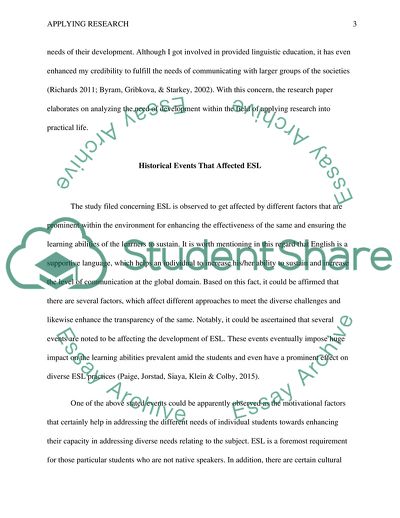Cite this document
(Strategic Management of ELT in Public Educational Systems Research Paper Example | Topics and Well Written Essays - 3000 words, n.d.)
Strategic Management of ELT in Public Educational Systems Research Paper Example | Topics and Well Written Essays - 3000 words. https://studentshare.org/education/1868073-applying-research
Strategic Management of ELT in Public Educational Systems Research Paper Example | Topics and Well Written Essays - 3000 words. https://studentshare.org/education/1868073-applying-research
(Strategic Management of ELT in Public Educational Systems Research Paper Example | Topics and Well Written Essays - 3000 Words)
Strategic Management of ELT in Public Educational Systems Research Paper Example | Topics and Well Written Essays - 3000 Words. https://studentshare.org/education/1868073-applying-research.
Strategic Management of ELT in Public Educational Systems Research Paper Example | Topics and Well Written Essays - 3000 Words. https://studentshare.org/education/1868073-applying-research.
“Strategic Management of ELT in Public Educational Systems Research Paper Example | Topics and Well Written Essays - 3000 Words”. https://studentshare.org/education/1868073-applying-research.


